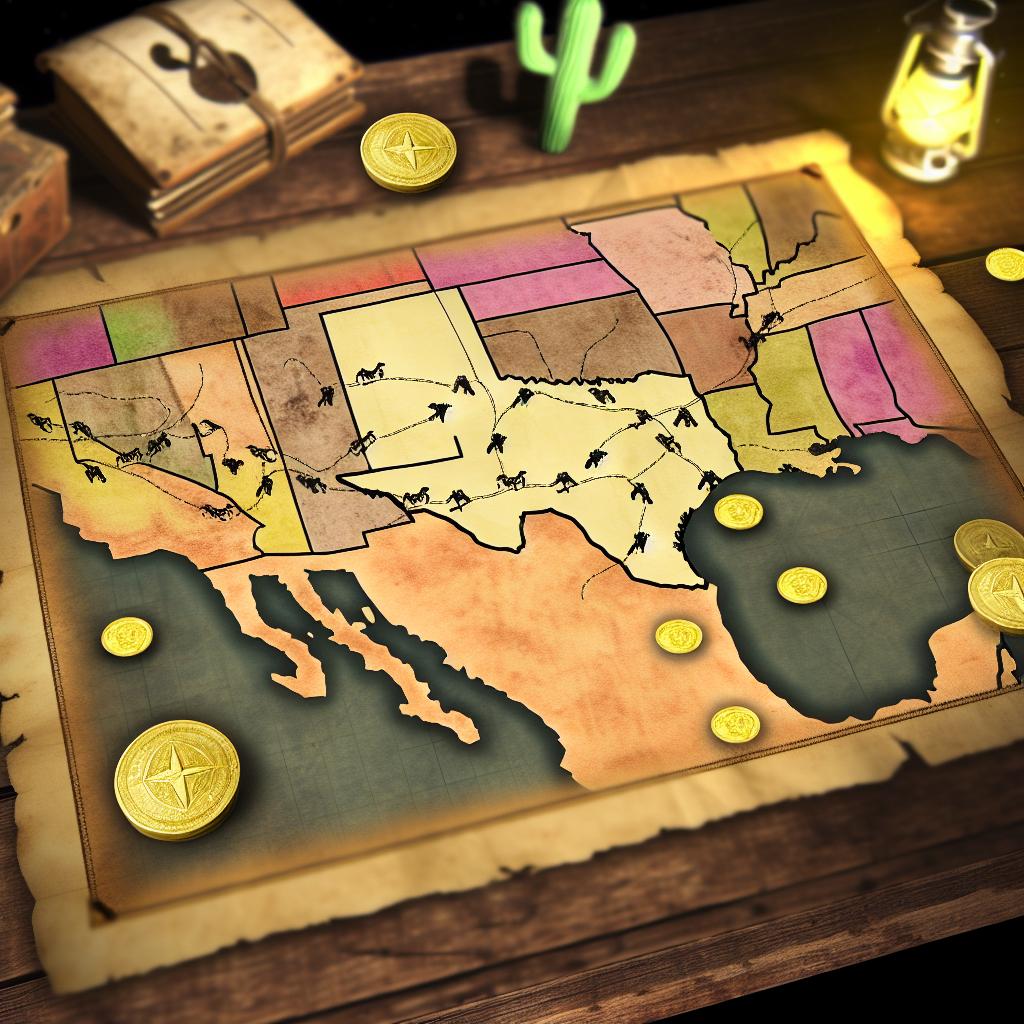The Historical Context
The legend of Mexico’s lost gold is intricately interwoven with the historical narratives of both Texas and Mexico. In the 19th century, these regions were hubs of political and social upheaval, marked by frequent power struggles over land, leadership, and resources. During this tumultuous period, Mexico witnessed a succession of various governments, each rising and falling, often within short spans of time. This constant state of change, coupled with political instability, created an environment ripe for tales of hidden or lost treasures, including the myth of the lost gold.
The elusive nature of the lost gold has captured the imagination of historians and treasure hunters alike. Mexican policy formulation was inconsistent, often resulting in the reshuffling of allegiances and control over territories. These shifts furthered the mystery as it is believed individuals and leaders of that era might have hidden wealth for future retrieval or to prevent it falling into the hands of rivals. These actions laid the groundwork for legends, as the movement and concealment of wealth were common themes during these uncertain times.
Routes and Trails
In exploring the possible trajectories of the lost gold from Mexico, a number of historical routes and trails come into the spotlight. The Texas landscape is crisscrossed with paths that, at one time, served as conduits for trade, exploration, and migration. During significant historical periods such as the Mexican-American War (1846-1848) and the subsequent Mexican Revolution in the early 20th century, many individuals traversed the Texas-Mexico border. These migrations were often quests for refuge, safety, and new beginnings. There is speculation that some of these wayfarers might have carried gold with them, either to fund their journeys or to safeguard it from being lost amidst the turmoil at home.
These routes and trails, besides serving economic and social purposes, also became the stage for countless stories and folklore. For instance, the Rio Grande was a significant lifeline, connecting various settlements and facilitating movement; many claim that traces of gold might have been hidden or lost along its journey. Today, these tales of gold hidden along well-trodden paths contribute to a treasure-hunting allure, raising questions about the historical credibility and origins of such narratives.
Theories and Claims
The narratives surrounding Mexican leaders transporting gold into Texas under duress are shrouded in intrigue. As Mexican leaders often found themselves in precarious political positions, they would flee conflicts with urgency, frequently taking with them what resources they could. The idea that they would carry substantial amounts of gold to ensure their survival, or as a form of wealth preservation, is a recurring motif. Enthusiasts of these theories often cite undocumented accounts of gold being discovered along historic trails or routes crossing the Rio Grande as evidence.
Claims of found treasures, though largely anecdotal, add an aura of legitimacy to the legends. These stories often involve unexplained wealth or odd discoveries that hint at a more extensive trove yet to be uncovered. Though definitive proof remains elusive, these accounts continue to inspire curiosity and exploration, motivating individuals to seek physical evidence within Texas’s rich terrain.
Gold Mining in Texas
Despite its infrequent association with gold production, Texas possesses a small but notable history of gold mining. Known for its diverse geology, Texas has regions where gold can be found, adding a semblance of plausibility to the stories about lost Mexican gold. For instance, the Llano Uplift region is one of Texas’s notable areas where gold deposits have been identified, albeit not in substantial quantities.
Gold mining activities in Texas, although limited, highlight the state’s mineral diversity. The presence of gold, even in modest amounts, lends credence to the possibility that historical rumors of lost treasures might have some basis in reality. The geological landscape of Texas suggests scattered deposits that miners and prospectors have sporadically tapped into over the years. These existing gold occurrences raise the potential of uncharted gold sources originating from Mexico’s storied treasures.
Challenges in Verifying the Legend
The legend of Mexico’s lost gold is, without a doubt, an alluring tale, yet verifying its authenticity poses significant challenges. Much of the narrative is grounded in oral histories and undocumented stories, lacking the concrete evidence needed to confirm these legends. Over time, physical evidence that may have existed could have been eroded or obscured due to natural changes in the landscape. Additionally, urbanization and development throughout Texas have dramatically altered its physical terrain, potentially covering up any artifacts or residues of the past that could establish the truth behind the lore.
For the inquisitive mind eager to delve deeper into this captivating piece of history, local archives and historical societies offer a comprehensive repository of historical materials and documents. These institutions hold the keys to unraveling some aspects of Texas’s storied past, potentially providing more concrete insights into the connections between Texas and Mexico’s lost gold. Documented accounts housed in these archives may grant a clearer understanding and perhaps assist in piecing together the puzzle of this enduring legend.


